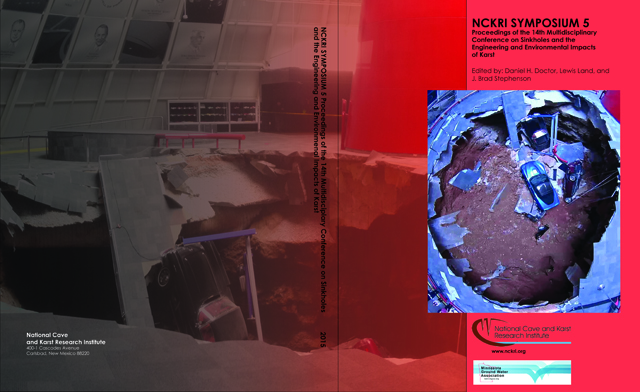Abstract
A unique area of Olmsted County is located a few miles southeast of Rochester by the small community of Predmore. Surface geology within the Orion Sinkhole Plain is dominated by a large array of sinkholes and limited soil cover over carbonate bedrock of the Ordovician Stewartville and Prosser Formations. Dye trace studies completed by Eagle and Alexander (2007) have demonstrated that a large portion of the plain’s groundwater discharges into springs that feed two local trout streams. Land-use in the area is mixed. For generations, local farmers have relied on livestock for stable income and profit. To put the 8,000 acre region into perspective, there are approximately 3,600 animal units located at 12 facilities which produce an estimated 74 million pounds of manure per year (United States Department of Agriculture / Natural Resources Conservation Service, 1995) and 10 million gallons of manure contaminated runoff. (Larsen et. al., 2014) 349 known karst features exist of which 316 are sinkholes. (Alexander, et. al., 1988) Following snowmelt and rain in March of 2013; an incident occurred where an area well was potentially impacted. Investigation revealed manure contaminated runoff was entering groundwater in a newly discovered sinkhole (Larsen, 2013). Local citizen concern grew for groundwater quality. Developing relationships with landowners and livestock producers became necessary for protection of water resources and has facilitated research, education and action. A newly formed sinkhole which seasonally receives feedlot runoff was studied with ground penetrating radar for repair. Two producers in the region are implementing manure management techniques that are more stringent then regulation. The Wiskow dye trace was completed in spring of 2014. The study identified discharge springs that discharge into the Mill Creek trout stream from two vulnerable sinkholes (Johnson et al., 2014). Four springs and four previously unknown sinkholes were identified and mapped. A manure contaminated runoff storage area was constructed in the fall of 2014 by a livestock producer located at a headwater spring of Mill Creek. A filter strip and large manure contaminated runoff system is being designed for construction in 2015. Building great relationships with producers has been successful in Olmsted County. Livestock producers are making investments and taking action. Producers are an essential component of the mid-western economy and assistance with information, funding and resources will help protect the environment and keep farms profitable for future generations.
DOI
http://dx.doi.org/10.5038/9780991000951.1025
Case Studies of Animal Feedlots on Karst in Olmsted County, Minnesota
A unique area of Olmsted County is located a few miles southeast of Rochester by the small community of Predmore. Surface geology within the Orion Sinkhole Plain is dominated by a large array of sinkholes and limited soil cover over carbonate bedrock of the Ordovician Stewartville and Prosser Formations. Dye trace studies completed by Eagle and Alexander (2007) have demonstrated that a large portion of the plain’s groundwater discharges into springs that feed two local trout streams. Land-use in the area is mixed. For generations, local farmers have relied on livestock for stable income and profit. To put the 8,000 acre region into perspective, there are approximately 3,600 animal units located at 12 facilities which produce an estimated 74 million pounds of manure per year (United States Department of Agriculture / Natural Resources Conservation Service, 1995) and 10 million gallons of manure contaminated runoff. (Larsen et. al., 2014) 349 known karst features exist of which 316 are sinkholes. (Alexander, et. al., 1988) Following snowmelt and rain in March of 2013; an incident occurred where an area well was potentially impacted. Investigation revealed manure contaminated runoff was entering groundwater in a newly discovered sinkhole (Larsen, 2013). Local citizen concern grew for groundwater quality. Developing relationships with landowners and livestock producers became necessary for protection of water resources and has facilitated research, education and action. A newly formed sinkhole which seasonally receives feedlot runoff was studied with ground penetrating radar for repair. Two producers in the region are implementing manure management techniques that are more stringent then regulation. The Wiskow dye trace was completed in spring of 2014. The study identified discharge springs that discharge into the Mill Creek trout stream from two vulnerable sinkholes (Johnson et al., 2014). Four springs and four previously unknown sinkholes were identified and mapped. A manure contaminated runoff storage area was constructed in the fall of 2014 by a livestock producer located at a headwater spring of Mill Creek. A filter strip and large manure contaminated runoff system is being designed for construction in 2015. Building great relationships with producers has been successful in Olmsted County. Livestock producers are making investments and taking action. Producers are an essential component of the mid-western economy and assistance with information, funding and resources will help protect the environment and keep farms profitable for future generations.

